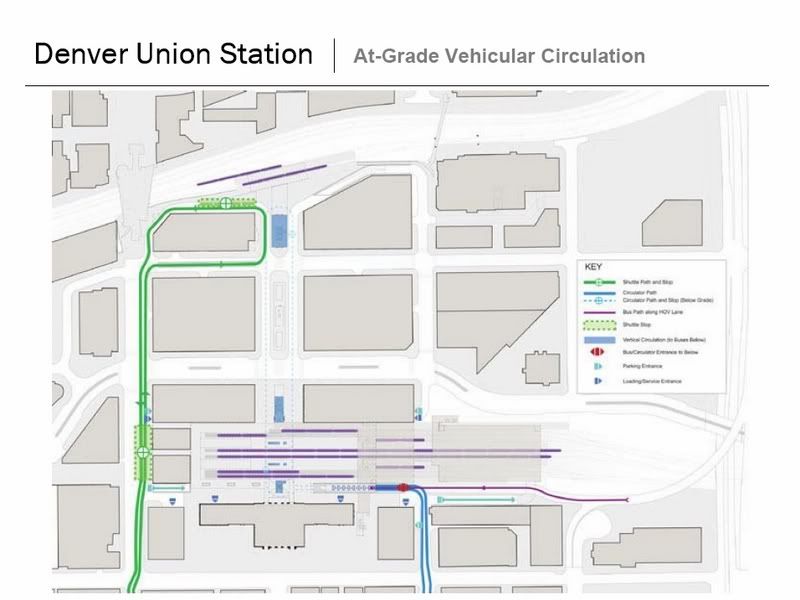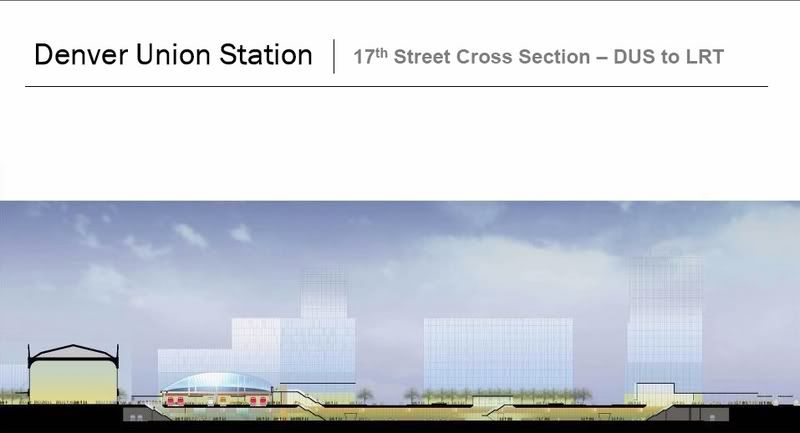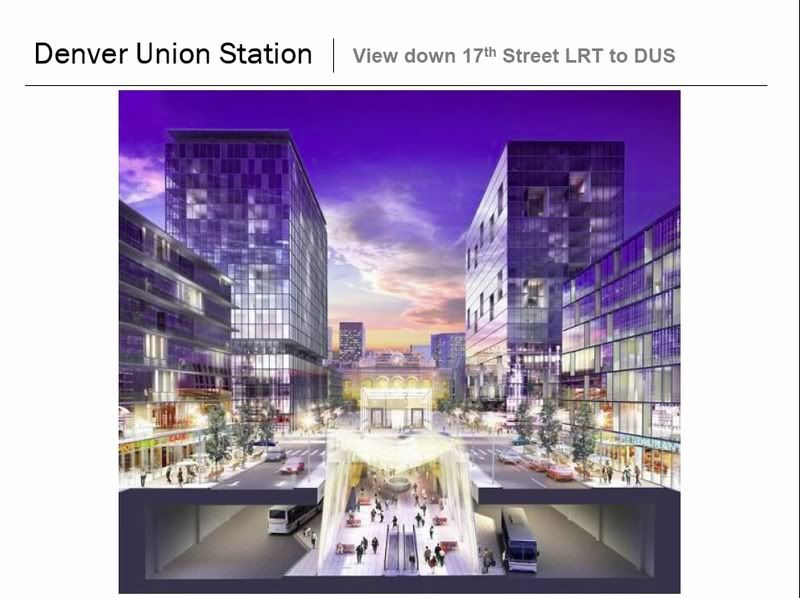RTD Denver currently hubs it's regional bus network at it's downtown Denver Market Street Station. The Market Street Station Regional Bus Terminal is several blocks away from Union Station and far too small. Market Street is an underground bus terminal, just as is the new Regional Bus Terminal being built as part of the Denver Union Station (DUS) redevelopment.
When DUS redevelopment fully opens in a few years, Market Street Station will be closed and demolished and then redeveloped into a mix-use project fronting the 16th Street Mall. Thus all regional bus operations will be consolidated into DUS underground Regional Bus Terminal, to make for far easier transfers between Light Rail, Commuter Rail, AmTrak and city buses.
Rick at Denverinfill.com/blog recently posted a comparison of the old underground Market Street, Regional Bus Terminal (at top), with the new DUS Regional Bus Terminal (at bottom). The new DUS bus terminal will have 22 bus bays, including 19 as cut-out bays and 3 as non-cut-out bays. The pedestrian concourse down the middle of the new Regional Bus Terminal, will be sealed off from the bus bays with sliding doors and environmentally controlled to provide year-a-round waiting and transfers from one mode of transit, to another (Light Rail at one end and Commuter Rail at the other). Stairs, elevators and escalators will provide access to each rail platform in the Commuter Rail Terminal, via this underground bus terminal pedestrian concourse, for added convenience.
Here is the comparison:
 Source: http://denverinfill.com/blog/
Here is a review of the other renderings, which help visualize how the station will function:
Source: http://denverinfill.com/blog/
Here is a review of the other renderings, which help visualize how the station will function:
Blue areas indicate vertical access between underground Bus Terminal and At-Grade. Light Rail Terminal is at top; Commuter Rail Terminal is at bottom; underground Bus Terminal is in middle, connecting the two


Side View cross section

Cut-out View




